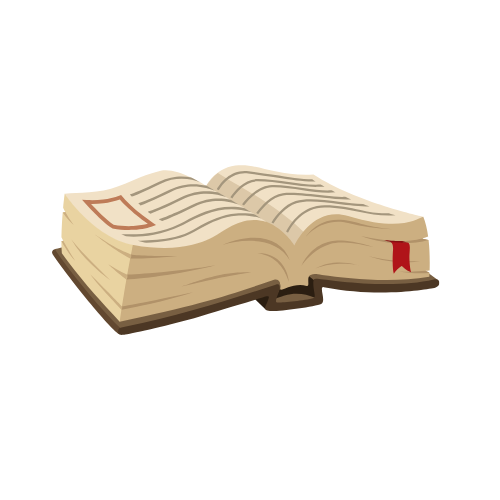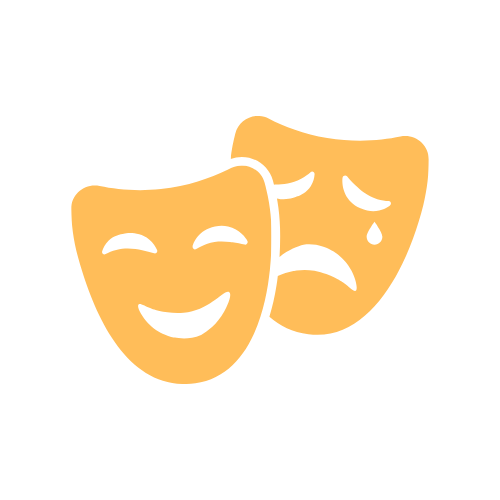IB English A: Language and Literature Paper 1 Commentary Advice

Many students, both HL and SL, come to Elite IB for assistance with Paper 1, the unseen aspect of the IB Language and Literature course. This blog aims to address some of the most common concerns and to provide students with a highly useful method to write the ideal commentary.

Standard Level
The biggest difference between SL and HL is that you only have to write a commentary on a single piece at Standard Level. The IB selects a diverse range of sources for Paper 1 extracts so the key here is flexibility. This adaptability is something you can acquire by doing lots of practice on different types of text, going above and beyond the mocks you do with your teacher.
It is very important to appreciate the IB’s assessment criteria when thinking about how to structure your commentary. These are broken down below.
Criterion A – Understanding and Interpretation
The IB is looking for an excellent overall appreciation of the text: its main message, the central purpose of the author, as well as an understanding of its basic features. You should aim to show this at the very beginning of your commentary, and this should be the first thing you are trying to understand about the text when you read it for the first time.
Criterion B – Appreciation of the Writer’s Choices
Throughout your commentary, you should bear this criterion in mind. Try not to stray too far into the broad themes of the passage because the examiners are always looking for a focus on the linguistic features of the text , and the exact techniques by which the author is conveying their overall meaning.
Criterion C – Organization and Development
You should avoid a line-by-line approach to your commentary: instead, organise your paragraphs around specific themes and features of the text.
Criterion D – Language
Write in a formal fashion, using as much precise vocabulary as possible. Avoid slang and make sure you quote frequently from the passage – around three times each paragraph.
How to write a commentary in 14 steps
- When you open the paper, look at each of the extracts and decide which text you will focus on. You should aim to practice various different types (articles, adverts, travel writing etc.) so you are comfortable with them, but it is natural for students to have a preference. Pick the text with the most substance you feel you can comment on in an intelligent manner. Spend a maximum of 5 minutes making this decision.
- Give an initial reading of your chosen passage and try to identify its overall message. Helpful questions you can ask yourself at this stage are: What is the essence of the text? What meaning is the author trying to convey? What is the central emotional resonance? What can you infer about the context?
- Spend some time thinking about this, and then formulate a thesis statement : a single sentence that states very clearly your exact impression of the text. Think of this as the what section of your commentary.
- Go over the text, this time asking yourself the question: how is the author accomplishing this aim? This should not be an attempt to spot features randomly but considering how language has been used to fulfil the essential meaning of the text . Annotate thoroughly, scouring the text for as many different linguistic devices that serve your thesis statement as you can.
- After about five minutes of close reading, you should hopefully have found three or four major linguistic areas. Select three quotations from each of these areas and organise them under headings, trying to add adjectives before them to make your points more specific: e.g. sensationalist language, use of juxtaposing quotations and erratic structure.
- Now you are ready to begin your plan. Write your full thesis statement . For example: ‘throughout the article, the author performs a subtle piece of satire that ridicules the current US President comprehensively, and this is achieved through the use of dark humour, effective linguistic motifs and a simple structure.’ The thesis statement should combine your overall impression of the passage with a precise indication of the three main linguistic areas you are going to focus on .
- Now plan each of your three paragraphs. Ideally, you will select three quotations, one from the beginning, middle and end of your text, demonstrating an appreciation for the device across the passage and noting any differences or developments. For each quotation, write a few words in your plan that will prompt you to analyse the language of the quotation directly . Overall this will mean around nine quotations, each of which you will analyse in turn throughout your commentary.
- Try and find good linking sentences between these paragraphs as you plan them, rather than beginning each paragraph with ‘Another aspect of the text is…;’ Using good conjoining sentences will make your commentary seem more than the sum of its parts and help you fulfil Criterion C.
- Once you have completed this for all your paragraphs, you are ready to start writing! You should spend around 30 minutes on your plan : this may seem like a lot but it will mean that when you come to writing the commentary you will be able to do so much more fluently and will save yourself time.
- Begin the commentary with some brief context about the passage, no more than a few sentences. After that should be your thesis statement, which should be stated in a precise and clear manner. Then outline the three main areas you will be focusing on, indicating the approach you will take, remembering to include precise adjectives.
- Next, go into your first paragraph. Think of each paragraph as being a mini-essay. Just as the introduction serves as the basis from which the rest of your essay is expanded, each paragraph should unfold neatly from its opening sentence. Therefore each of your quotations should merely be illustrations of the point you make in your opening sentence. Make sure you analyse the specific language of each quotation, remembering each time to connect those thoughts to the message of your thesis statement.
- In between each paragraph, try to use as many connecting sentences as possible. If, for example, the sarcastic tone of an article is conveyed through its structure, use this as the bridge between those two paragraphs.
- As you progress through the commentary, remember to quote frequently from the text. Keep the quotations short so you can go into lots of details about the techniques being used.
- Your conclusion, much like your introduction, should not be very long. Hopefully, the process of writing the commentary has prompted you to think of something in addition to your original thesis statement. Perhaps there is greater subtlety you wish to add at this stage. Make one additional comment on the text overall and then recap the main areas you have written about. End with a direct reference to your original thesis statement.
The more you practice, the more you will feel able to write four or five paragraphs in your commentary. This is absolutely fine, and the same method suggested here can also be used.
Higher Level
This is a great chance to display your skills in comparison and contrast, something you will be familiar with from other parts of the IB.
Assessment Criteria
The main difference with the HL criteria is Criterion A: Understanding and comparison of the texts
Level 5 – ‘There is an excellent understanding of the texts, their context and purpose, and the similarities and differences between them; comments are fully supported by well-chosen references to the texts.’
A lot of the method for planning and structuring the commentary at HL is similar to the SL method, so what follows is some useful advice on how to Compare and Contrast.
- Always organise your paragraphs around particular themes and features of the text.
- Focus on the points of similarity in these themes within each paragraph, and then move on to discussing the differences. You should avoid writing a commentary that deals entirely with one passage and then another since the IB is looking for a coherent structure that can synthesise both passages into a single effective commentary.
- In your paragraphs, remember always to directly analyse any language that you quote. This should involve some comment on the way in which the author’s language is shaping their meaning, and also the effects on the reader .
- You should always use the guiding questions that the IB gives as part of the Paper 1 question, but be sure to be more precise than this when you are structuring your essay. In your introduction, it can be tempting to follow the guiding questions broadly and write something like, ‘and this is achieved through the use of tone’ but this is actually rather imprecise and not what the examiners are looking for. It is absolutely fine to use these prompts in your commentary, but always be sure to specify the way in which this feature has been used rather than just a generic reference. Therefore, rephrase it in your introduction by saying, for example, that you will discuss the use of ‘sardonic tone’.
- Try to infer as much about the context as possible: the date of the publication, the information in the passage, your own knowledge about what is being discussed. Use this to inform your ideas about who the readership of the text might be, and therefore the effects that certain techniques might have on these readers.
- Finally, remember to keep quoting directly from both texts. Avoid going off into broad comparisons between ideas in both texts, and remember to keep your commentary grounded in the language that is being used, and the relationship that has to the overall meaning of the text.
Share article links
Related Articles

- Uncategorized
International Baccalaureate (IB) Retakes FAQs
In October & November 2023, we have partnered with a school in London to run a retake examination programme. This follows on from our accelerated 8 week revision programme for N23 exam takers. To read more click here. If you are reading this as you are currently sitting your May 2023 exams and are considering your […]
International Baccalaureate (IB) Remark FAQs
The following article was written in advance of the May 2023 exam session. If you are more interested in retakes, rather than remarks, click here. How do I make a re-mark request after my exam sessions? Which IB subjects and externally assessed components can I remark? …Have you got the same IB remark questions and […]

History: Internal Assessment Tips
Choosing a question The History Internal Assessment is an investigation into a topic of your choice – this means it’s important that you choose something you find personally interesting, making it much easier to write and perfect your coursework. Take your time deciding on and refining your IA question, as this will change how your […]
IB English/Commentary
Return to IB English
- 1.1 Types of Poems
- 1.2 Step 1: Reading the Poem
- 1.3 Step 2: Looking for Detail
- 1.4 Step 3: Structuring your Commentary
- 1.5 Step 4: Example Commentary
How to write a Poetry Commentary [ edit | edit source ]
In order to write a IB Paper 1 commentary, the following guidelines must be followed. For the IB commentary, you are expected to explain a given poem or prose. While it is not to be confused with a detailed explanation as you might expect in college which would be anywhere from 5-15 pages in length, the commentary is less formulaic and structured than the World Literature papers, but at the same time, it adheres to formal standard English.
There are several disagreements as to what constitutes a commentary. Some hold that by nature, it is not formal--it can be a running "commentary"(hence the term, "commentary") of what the examinee sees in a given poem. Though this approach runs the risk of seeming like a literary version of a grocery list, as long as the examinee sees some overarching, organizing method--an idea, concept, or literary device that the poet uses to hold the poem together cohesively--the commentary need not be as tightly formulaic as the five paragraph thesis paper (which is generally despised in most circles because it discourages divergent thinking).
Others say that this organic approach makes it impossible to surmise any actual literary analysis. A beginning "thesis" of the poem's focus, followed by organizing the analysis into patterns, strands, or organizational groups, makes it easy to follow a persuasive, holistic presentation.
All agree, however, on the paramount importance of framing one's literary analysis within the terms and devices of poetry; one must both identify literary elements, analyze its purpose and effect, and speak intelligently as to tone, diction, structure, mood, and form.
Below are some literary devices to get you started.
- Accent : refers to the stressed portion of a word. An accent is used to place emphasis on a word.
- Note : accent and stress can be used interchangeably.
- Allegory : A description that has a second, usually moral meaning.
- Alliteration : is the repetition of initial (at the beginning) CONSONANT sounds (if it's a vowel repetition, you would call it assonance. Assonance includes any repetition of a vowel sound in any part of the word. It usually occurs in the middle of words).
- Allusion : refers to an event from an external content. It is understandable only to those with prior knowledge of the reference in question (as the writer assumes the reader has).
- Apostrophe : Something that addresses an object or person or idea who is not present as though he/she/it could reply.
- Antithesis : The juxtaposition of contrasting words or ideas to create a feeling of balance (e.g Too black for heaven, and yet too white for hell)
- Assonance : The repetition of vowel sounds may also add to euphony.
- Aubade : Poetry referring to either the dawn, a love song or about parting lovers.
- Ballad : A form of poetry in a specific meter meant to be sung. There is always a repeating refrain and it is always narrative in form. See below for more information.
- Blank verse : Iambic Pentameter that doesn't rhyme. (Much of Shakespeare's plays for example were written in blank verse.)
- Caesura : A cut or break in a line, could be a comma or a semicolon.
- Cacophony : Harsh sounding and generally unpleasant.
- Consonance : The repetition of consonant sounds NOT in the beginning of a word (which would be alliteration). Enforces relation.
- Continuous Form : Lines follow each other without any type of structural organization except by blocks of meaning.
- Didactic Poetry : Poetry with a directly morally teaching purpose.
- Ethos : the validity of the source or narrator/ speaker.
- Euphony : Pleasant sounding.
- Extended Figure : An apostrophe, simile, metaphor, etc. which is developed throughout a poem.
- Imagery : Language which appeals to each of the five senses.
- Visual imagery : Sight. The most frequent type.
- Aural or auditory imagery : Sound.
- Olfactory imagery : Smell.
- Gustatory imagery : Taste.
- Tactile imagery : Touch, tangibility.
- Organic imagery : Human sensations, hunger for example.
- Irony : Dramatic or otherwise, conveying an aspect that is intrinsically unexpected or self-contradictory.
- Metaphor : A comparison between two unlike things without using the words "like" or "as".
- Onomatopoeia : Words which are written to mimic a sound. (SHAZAM! SPLAT! PLOP!)
- Paradox : A statement which appears to contradict itself but makes sense (usually in an abstract sense).
- Personification : Animals and inanimate objects are given human characteristics.
- Phonetic Intensive : A word whose sound emphasizes its meaning.
- Prose : Language which is not in meter.
- Refrain : A repeated line, phrase, sentence, etc. which appears throughout a poem.
- Rhetorical Poetry : Poetry written in superfluous language with the intention of being overdramatic.
- Scansion : The process of measuring verse.
- Simile : The comparison of two subjects using "like" or "as" or something similar
- Sonnet : See link.
- Tone : The writer's attitude toward the subject.
Advanced Vocabulary for the Daring
- Anaphora : Repetition of the same word or words from the beginning of sentences, lines, or phrases.
- Ars Poetica : A poem about poetry
- Conceit : The comparison of two dissimilar things. "Shall I compare thee to a summer's day"
- Dramatic monologue : Narrator speaks to himself. The speaker is not the author.
- Epiphany : A realization or comprehension of the essence of something.
- Feminine Rhyme : Two syllable (Disyllabic) rhyme consisting of stressed syllable followed by unstressed
- Incantation : Use of words to create an archaic effect. (Opening scene of Macbeth and the Weird Sisters)
- Incremental repetition : Repetition of succeeding stanzas with small substitutions of changes.
- Masculine rhyme : Monosyllabic rhymes.
- Metonymy : Substitutes the name of one thing with something closely associated with it.
- Synecdoche : Substitutes a part of one thing to represent the whole, or vice versa.
- Pathetic fallacy : A reflection of the action/events through nature/weather. (A thunderstorm during the creation of Frankenstein's monster sequence)
- Persona : The character created by the narrator.
- Synaesthesia : A blending of sensations.
- Trope : A way of extending the meanings of words beyond the literal.
Types of Poems [ edit | edit source ]
- Alexandrine : Twelve-syllable poetic line of French origin.
- Couplet : A poem or section consisting of two successive lines, usually rhyming and having the same meter and often forming a complete thought.
- Elegy : A poem of loss and consolation.
- Panegyric : Praise for an individual, a group of people, or a body.
- Sonnet : A poem of fourteen lines, usually following a strict rhyme scheme/structure.
- Stichic : A poem which is a continuous sequence of lines without any division into stanzas.
- Villanelle : 19 lines divided into 6 stanzas 5 of 3 and 1 of 4.
- Apostrophe : A poem directed to a person or thing not present/alive.
Step 1: Reading the Poem [ edit | edit source ]
- Read the poem silently once. Take a mental note or actually write down if you can't remember any impressions, emotions, or confusions the poem may originally stir.
- Read the poem once more; try to understand its meaning or the course of events it may describe.
- Read the poem aloud if possible. If you're in an exam room you can read the poem under your breath. Take note of the tone and speed of the poem.
- Read the poem again and take notes about the literal and figurative context of the poem. This should include its meaning on the literal level and any figurative meanings it may include.
- Read the poem again, this time looking for literary devices. These should be, but not limited to:
- Onomatopoeia and Phonetic Intensive words
- Metaphors, Similes, and Personifications.
- Juxtaposition and Contrast
- Once you're sure you've found these literary devices, proceed to look further for:
- What does the title suggest- is it related to our understanding of the poem?
- Note : Compare your first impression of the title to its actual meaning.
- Does the poem have an apostrophe?
- Are sections cacophonic or euphonic? If so, do the previous literature features make them so?
- Is there any irony?
- Does the poem have an extensive figure?
- Is there a refrain?
- Next, once you've gone through the poem's meaning and its literary devices- it's time to look for form!
- Note : Knowing a poem's scansion is not necessarily required. You don't need to state this poem is written in dactylic hectometre, but it’s pretty obvious if a poem is written in iambic pentameter and counting meter isn't too difficult.
- Is the poem in a continuous form, a stanzaic form, or a fixed form? (Such as a Ballad or a Sonnet)
- Take note of the poem's structure- how many stanzas, how many lines, etc.
- Make extra note of the author's tone and how this influences the poem.
Step 2: Looking for Detail [ edit | edit source ]
- Now that you've found the poem's literal and figurative meanings, its form, and its literary devices - it's time to get to work!
- Make connections - in what ways do the poem's literary devices add to the poem's meaning?
- What effect does the writer's tone have on the reader's perception of the poem?
- What effect does meter and form have on meaning?
An excellent way of keeping your entire commentary in focus is, asking yourself these simple yet significant questions:
1) What's being said (content, maybe theme, character, ideas, relationships, love, peace etc.)
2) How is it being said (stylistic devices, rhyme, structure, diction, etc.)
3) So What? (I.e. for what ends, purposes, extrapolation chances, personal connection and response, etc.)
Remember it's not a grocery list of memorized terms- barfed out in a time period of 2 hours. It is supposed to be an intricate and insightful response to what you as a reader, understand from the text, the author's intended message. The planning phase is perhaps the most important, even more important than the writing phase (which comes naturally succeeding it, if planning goes well the written should be equally responsive).
Step 3: Structuring your Commentary [ edit | edit source ]
- There is no definitive structure to a poetry commentary; this isn't like writing a history essay. However, structure is an important aspect in writing a poem commentary and you can prepare yourself in advance by having some notion of the order in which you will write. Here is an example of a possible essay structure:
- Note : Everyone is different, if you want to write your poetry commentary in a different form, by all means do so- this is merely a suggestion aimed at guiding your writing.
- Introduction
- State the poem's title, author, and a small introduction to the poem's overall literal meaning.
- State the poem's form, and any important literary devices which appear throughout it.
- Write about an important aspect of the poem which you will further discuss in your wildcard paragraph and eventually conclude in your last paragraph.
- Paragraph One: Structure and Narration
- Briefly mention the poem's structure. Make note of the use of Enjambment or the juxtaposition of words.
- Write about the poem's meter and its speed.
- Make note of the poem's speaker (do not use narrator) and his/her tone.
- Paragraph Two: Meaning
- State the poem's literal meaning.
- State the poem's figurative meaning.
- Paragraph Three: Devices
- Write about the poem's literary devices.
- Write about important themes present in the poem.
- Paragraph Four: Combine
- Write how literary devices and meaning interconnect.
- This paragraph should begin to bring things together.
- Paragraph Five: The Wild Card
- Introduce an important theme or aspect of the poem in great detail. This could be a refrain, an extended figure or an apostrophe.
- The conclusion should combine the Wild Card with the above paragraphs. In this case, one could talk about how literary devices or the poem's structure aid in supporting an extended figure.
Here is another suggestion for a structure which requires about 10-15 minutes of planning, but is still just as efficient-
- If any, state the relevance of the background of the author (i.e. their philosophies, causes, a message..)
- Construct a 'map' to your answer. Concisely, write one sentence on each idea that will be put forth in the essay
- Paragraph One: Idea One
- P oint: State the point you are trying to prove, e.g. The conflict in the extract symbolizes change
- E vidence: Give evidence for the conflict by quoting
- T echnique: State the literary features
- E laboration: Develop your point further and give a deeper explanation on your point. Also state the reason for the point that the author was trying to make, or the reason for which the literary feature was used
- R esponse: Describe the emotions or ideas evoked into the reader, if any
- Paragraph Two: Idea Two
- e.g. Point: The first person narrative is used to gain empathy from the reader.
- (Follow the same pattern as used for the first idea)
(An ideal commentary has 3-5 ideas . Remember to focus more on developing the ideas than to have more of them. 3 well developed ideas will fetch more marks than 6 baseless points.)
- (Off record: One must realize that a conclusion is usually just the introduction which is paraphrased with a more conclusive tone and possibly a fact or two more!)
- The conclusion must contain a brief summation of all the points you have made and why were they the most important. It could also include some personal interpretation that you are not confident about adding in the body of your essay.
Step 4: Example Commentary [ edit | edit source ]
Confused? Don't be! Here everything will be made clear as together we'll decipher a poem. Our poem of choice is The Daffodils by William Wordsworth .
I wandered lonely as a cloud
When all at once I saw a crowd,
Beside the lake, beneath the trees,
Fluttering and dancing in the breeze.
Continuous as the stars that shine
They stretched in never-ending line
Ten thousand saw I at a glance,
Tossing their heads in sprightly dance.
The waves beside them danced, but they
A Poet could not but be gay,
I gazed--and gazed--but little thought
What wealth the show to me had brought:
For oft, when on my couch I lie
They flash upon that inward eye
And then my heart with pleasure fills,
And dances with the daffodils.
- Try to do it by yourself first- even if roughly.
- First impression : The poem is extremely euphonic and uses quite a bit of pleasant imagery. When spoken, it rolls off the tongue naturally. This reinforces the poem's joyful tone which proceeds through out the poem except for momentarily in the fourth stanza where the first two lines are cacophonic. The poem deals with an extended figure which may be considered an apostrophe.
- Structure : The poem is in a stanzaic form of four stanzas of six lines each. The rhyming scheme alternates at first, ABAB, but ends in a rhyming couplet CC which adds to the euphony of the poem and the ease at which it's spoken. The lines are in iambic tetrameter.
- Note : Meter can be found by counting the syllables in each line and simply dividing them by two. If this is the same for each line, then the poem is written in a specific meter.
- Speaker : The speaker is obviously the poet himself. By sharing his own first experiences with such a crowd of daffodils the reader gains the same first impressions.
- Literal Meaning : The poet recalls his first experience of seeing such a wondrous crowd of daffodils beside a bay. The blowing wind moves them in an awesome formation, a spectacle of nature of which the poet remembers in order to lift his spirits.
- Figurative Meaning : Everyone has had their good experiences in life. Perhaps it's the sensation of getting a new dog or seeing a beautiful bird take flight. It's important for us to remember those experiences, in times when we are down.
- Imagery : Lots of visual imagery
- "Golden daffodils" (4)
- "Sparkling waves" (14)
- "stars that shine / and twinkle on the milky way" (7-8)
- Kinesthetic imagery
- "Fluttering and dancing in the breeze" (6)
- "Tossing their heads in sprightly dance" (12)
- "The waves beside them danced" (13)
- Metaphors and Similes
- "I wandered lonely as a cloud" (1)
- "Continuous as the stars" (7)
- Personification of the Daffodils
- I saw a crowd / a host, of golden daffodils (3-4)
- Tossing their heads in sprightly dance (12)
- In such a jocund company (16)
- A host of golden daffodils (3)
- Beside the lake, beneath the trees (6)
- For oft when on my couch (19)
- heart with pleasures fills (23)
- Alliteration
- Beside... beneath... breeze (5-6)
- stars...stretch...shine (7-8)
- glee...gay...gazed...gazed (13-15)
- Repetition :
- Dance (6), (12), (13), (24)
- Wildcard: Importance of the Speaker
- The speaker shows a great tranquility and appreciation of nature. The juxtaposition of the first two lines of the last paragraph with the rest of the poem and the use of the word "couch" suggest unhappiness with the material surroundings.
- Great! Now that we've written down the basic aspects of the poem- it's time for us to connect their meanings and effects!
The Commentary
"The Daffodils" by William Wordsworth describes the poet's sight of a spectacular field of daffodils situated by a bay. He uses worldly imagery to magnify such a small feat of nature in an attempt to demonstrate how both nature and memories are important in dealing with many of the woes of a modern society. The personified daffodils are the center of the poem which is written in a stanzaic form with a consistent rhyming scheme. Through the use of literary devices and intensive visual and kinesthetic imagery, the reader is able to adopt the same feeling of awe at this simplistic spectacle as once felt by the poet.
The poem is written in stanzaic form of four stanzas each consisting of six lines with each line written in iambic tetrameter. For the first four lines of each stanza, the rhyming scheme alternates as ABAB, but ends with a rhyming couplet. This stanzaic form serves to reinforce the poem's euphony, with the ending the consistent rhyming scheme serving to ensure that the poem progresses smoothly. Indeed, the structure of the poem may even serve to reflect the extended figure of the poem, for like the daffodils, we too are entranced by the product of its general simplicity. The poem is told through the eyes of the poet himself.
The poem describes in detail, a simplistic wonder of nature, a "crowd, / a host, of golden daffodils" (3-4) situated "along the margin of a bay" (10). The daffodils "dance" (6) and though not mentioned directly, this dance is most likely caused by the wind. The poet is amazed at two things, the sheer number of daffodils, comparing their numbers to the number of stars in "the milky way" (7) and the intricate dance that they produce. He then states that the waves of the lake also danced, most likely ripples once again caused by the wind, but the effect the wind had on the flowers "Out-did the sparkling waves in glee"(13). The sight was so beautiful that the poet "gazed and gazed" (17), clueless of the "wealth" (18) gained from the experience. From then on, when the Poet is in a "vacant mood" (20), he recalls this experience in his mind and his "heart [fills] with pleasures" (23) as he too "dances with the daffodils" (24).
(Note: this commentary isn't the best example... the use of the quotes at the end is exactly what IB doesn't want. Additionally it's far too short - a commentary should be about one thousand words. This commentary also do not develop a line of reasoning, and do not use sufficient reasoning and explanations to support the author's claim. Maybe try to write one yourself would be the best way to learn!)
Sources http://courses.durhamtech.edu/perkins/aris.html
- Book:IB English
Navigation menu
How to score top marks in your Paper 1 Commentary (IB English A Language and Literature)

August 31st, 2017 Last updated: June 28th, 2023
The Paper 1 Commentary requires a unique set of essay writing skills, particularly given the tight time constraints. Read Tim's top tips to ensure that you are adhering to the strict criteria. Many of these have been compiled from previous marking experience!
The Paper 1 Commentary requires a unique set of essay writing skills, particularly given the tight time constraints. Read Tim’s top tips to ensure that you are adhering to the strict criteria. Many of these have been compiled from previous marking experience.
We’ll start at the beginning and work through the commentary. Remember that if you are working at Standard Level, you only have to answer on one text (so you can choose which one to respond to), but if you are working at Higher Level, you need to answer on both texts. There is an extra assessment objective for High Level which requires you to compare both texts.
If you are working at Standard Level and deciding which question to answer, do it quickly, and don’t change your mind once you’ve started writing.
Secure your IB English Tutor today.
Your thesis is next and should be within the same paragraph as your introduction. This requires some planning as it must make clear reference to a wider idea. A safe template to use is, ‘This extract engages with the idea of … through the use of … , … and … .’ You must identify the extract’s key literary features, which you feel are working together to convey the wider idea.
The point of the thesis is to answer the question ‘so what?’ – if it does not, then what is the point of the examiner reading further? You are making no argument. Be wary of bandying about huge terms like imagination, beauty and nature – they are non-specific and won’t help you construct an argument.
Topic Sentences
These are used at the start of your paragraphs and signal to the examiner that you are moving on to your next idea, or topic. Your topic sentences must be ‘stepping stones’ in developing your argument (and must cover the literary features that you mentioned in your introduction).
A good tip is to write these topic sentences out in your planning time, and ask yourself whether they constitute a coherent, developed commentary plan. If you are able to swap any two topic sentences, and it makes no difference to your commentary, then you have a list (not an argument). Your argument is like a thread and develops throughout the essay, with one topic leading on to the next. Use connecting words to make a link between paragraphs.
Your paragraphs must be well-planned, and centred around the points you wish to make.
Long paragraphs (anything over three quarters of a page) suggest a lack of planning, and increase the likelihood of drifting far from your topic sentence. Similarly, watch out for the introduction of new material mid-paragraph, which also suggests a lack of planning. Points do occasionally need reinforcing, but unnecessary repetition undermines development.
You have a choice between a linear and a thematic structure, but your choice must be dictated by the nature of the passage. It is also worth keeping in mind the limitations of each structure – linear commentaries can resemble a list of points, with ideas piled upon ideas (and thus suggest less planning), whilst thematic commentaries can extend way beyond the remit of the initial extract.
Superficial analysis will never score more than 3 for criterion B. Avoid extensive plot retelling or description – the examiner already knows the passage(s). Make sure you don’t miss opportunities to discuss key devices – if there is an extended metaphor running through the poem, you are showing limited understanding and analytical insight if you fail to discuss it. All points must be supported by evidence and analysis. You are strongly encouraged to make reference to the overall structure and shape when discussing a prose passage. Think about a change of pace, or a moment of climax. Equally, think about how images work together across stanzas when writing about a poem – the poems in Paper 1 are usually chosen because they develop in some way.
Finally, there is usually a speaker or narrator. Think about the effect of such a narrative device.
Spelling, punctuation and grammar all equate to an easy 5 marks in a commentary, but do not forget that your register must also be appropriately formal and engaging.
The best preparation for the IB English Paper One Commentary is essay planning and practice, marked by and discussed with an experienced, well-qualified teacher or tutor. Do get in touch if we can help.
If you liked this article, subscribe to our newsletter
By subscribing to our newsletter you agree to receive email from us and agree to our Terms and Conditions*
Join the discussion! Cancel reply
Tutors in schools.

Recent changes to the National Tutoring Programme mean that many schools are now empowered to choose their own tuition provider to help their students. Owl Tutors provides qualified teachers for one-to-one support and have worked successfully with a number of schools. This article sets out why your school may benefit from choosing an Owl Tutor.
Author Owl Tutors Read 3 minutes
Is Wikipedia a reliable source for students?

In this article, John, an experienced teacher, explores the pros and cons of using Wikipedia. Whether you are a student at school, college or university, you will find a range of practical points you will need to consider, as well as ethical considerations. So, can Wikipedia be considered a reliable source? Read on to find out!
Author John Read 6 minutes
Ten top tips to get an A* in iGCSE English Language

In this article, iGCSE teacher Matt, takes us through his ten top tips to making an A* more achievable.
Author Owl Tutors Read 4 minutes
IB English A Language and Literature Paper 2: How to get top marks

In this blog, Francesca, an experienced IB teacher, shows us that full marks in Paper 2 are achievable if we understand the mark criteria.
Author Owl Tutors Read 6 minutes
9 ways to get a 9 in GCSE English Language

In this blog, Holly shares top tips of how to achieve a 9 in the English Language GCSE. These tips work for all exam boards and although following them is no guarantee of a grade 9, they could help to raise your grade and improve your performance in the exam. Be sure to check out our other GCSE guides to help with your assessments too!
Author Holly Read 7 minutes
How to help your child with English skills at home: a parent’s guide

In this blog, I explain how simple things like watching a tv show together, playing a game or reading a book can help you to support your child with their English - no textbook or grammar flashcards required! These tasks are designed for a variety of ages and abilities, so you can adapt them to fit the needs of your child.
Author Holly Read 5 minutes
Bridging the gap between overseas and UK-based education when English is your child’s second language

In this blog, the first of a new series, Holly, an experienced ESL (English as a Second Language) teacher, discusses how tailored tutoring could help to bridge the gap for your child if you are moving to the UK school system from overseas.
Author Holly Read 4 minutes
You might be interested in
The ib extended essay.
Author: Graham
7 tips to tackle Shakespeare set texts (GCSE English Literature)
Alternatives to university.
+44 020 3457 8474 [email protected]
Owl Tutors Limited Company Number: 07679444 VAT Number 182078794 Unit 2A, The Plough Brewery 516 Wandsworth Road London SW8 3JX United Kingdom
2024 Copyright Owl Tutors | Terms & Conditions | UK | Privacy Policy

Choose Your Test
Sat / act prep online guides and tips, the best ib english study guide and notes for sl/hl.
International Baccalaureate (IB)

Are you taking IB English and need some help with your studying? No need to reread all the books and poems you covered in class! This study guide is for IB English A students (students in IB English A: literature SL/HL, IB English A: language and literature SL/HL, or IB English literature and performance SL ) who are looking for additional guidance on writing their commentaries or essays.
I've compiled this IB English study guide using the best free materials available for this class. Use it to supplement your classwork and help you prepare for exams throughout the school year.
What's Tested on the IB English Exams?
The IB English courses are unique from other IB classes in that they don't have a very rigid curriculum with exact topics to cover. Instead, your class (or most likely your teacher) is given the freedom to choose what works (from a list of prescribed authors and a list of prescribed literature in translation from IBO) to teach. The exams reflect that freedom.
On the exam for all English A courses, you're asked to write essays that incorporate examples from novels, poems, plays, and other texts you've read. You're also asked to interpret a text that you've read for the first time the day of the exam.
The exact number of questions you'll have to answer varies by the course , but the types of questions asked on each all fall into the two categories listed above.

What's Offered in This Guide?
In this guide, I have compiled materials to help teach you how to interpret poetry and how to structure your essay/commentary. I've also provided notes on several books typically taught in IB English SL/HL.
This should be most of the material you need to study for your IB exam and to study for your in-class exams.
How to Interpret Poetry Guides
Many people struggle the most with the poetry material, and if you're one of those people, we have some resources specifically for making poetry questions easier.
Here is a full explanation of how to interpret poetry for the IB exam with term definitions, descriptions of types of poems, and examples. We also have tons of poetry resources on our blog that range from explaining specific terms all the way to complete, expert analyses of poems you should know.
Here are some resources to get you started:
- Imagery defined
- Everything you need to know about Point of View
- The 20 poetic devices you should know
- Understanding allusion
- A crash course on Romantic poetry
- Understanding personification
- Famous sonnets, explained
- An expert guide to understanding rhyme and meter, including iambic pentameter
- The eight types of sonnets
- Expert analysis of "Do not go gentle into that good night" by Dylan Thomas
This is another great resource with poetry terms defined on "flashcards" , and you can test yourself on the site by clicking "play."
How to Write Your Essay Guide
If you're not sure how to write your essay, here's a guide to what your essay should look like for the IB English SL/HL papers. This guide gives advice on how you should structure your essay and what you should include in it. It also contains a few sample questions so you can get a better idea of the types of prompts you can expect to see.

IB English Book Notes
Based on the list of prescribed authors and literature from IBO, I picked some of the most popular books to teach and provided links to notes on those works. What's important to remember from these books is key moments, themes, motifs, and symbols, so you can discuss them on your in-class tests and the IB papers.
- Adventures of Huckleberry Finn
- A Farewell to Arms
- Animal Farm
- All the Pretty Horses
- A Streetcar Named Desire
- Anna Karenina
- As I Lay Dying
- Brave New World
- Crime and Punishment
- Death of a Salesman
- A Doll's House
- Don Quixote
- Dr. Zhivago
- Frankenstein
- Great Expectations
- Heart of Darkness
- Lord of the Flies
- Love in the Time of Cholera
- Love Medicine
- One Day in the Life of Ivan Denisovich
- Romeo & Juliet
- Sense and Sensibility
- The Awakening
- The Bluest Eye
- The Great Gatsby
- The Picture of Dorian Gray
- The Stranger
- The Sun Also Rises
- Waiting for Godot

The Best Study Practices for IB English
Hopefully, this guide will be an asset to you throughout the school year for in-class quizzes as well as at the end of the year for the IB exam. Taking practice tests is also important, and you should also look at our other article for access to FREE IB English past papers to help you familiarize yourself with the types of questions asked by the IBO (and I'm sure your teacher will ask similar questions on your quizzes).
Make sure you're reading all of the novels and poetry assigned to you in class, and take detailed notes on them. This will help you remember key themes and plot points so you don't find yourself needing to reread a pile of books right before the exam.
Finally, keep up with the material you learn in class, and don't fall behind. Reading several novels the week before the IB exam won't be much help. You need to have time and let the material sink in over the course of the class, so you're able to remember it easily on the day of the IB exam.

What's Next?
Want some more study materials for IB English? Our guide to IB English past papers has links to every free and official past IB English paper available!
Are you hoping to squeeze in some extra IB classes ? Learn about the IB courses offered online by reading our guide.
Not sure where you want to go to college? Check out our guide to finding your target school. Also, figure out your target SAT score or target ACT score .
Want to improve your SAT score by 160 points or your ACT score by 4 points? We've written a guide for each test about the top 5 strategies you must be using to have a shot at improving your score. Download it for free now:

As an SAT/ACT tutor, Dora has guided many students to test prep success. She loves watching students succeed and is committed to helping you get there. Dora received a full-tuition merit based scholarship to University of Southern California. She graduated magna cum laude and scored in the 99th percentile on the ACT. She is also passionate about acting, writing, and photography.
Student and Parent Forum
Our new student and parent forum, at ExpertHub.PrepScholar.com , allow you to interact with your peers and the PrepScholar staff. See how other students and parents are navigating high school, college, and the college admissions process. Ask questions; get answers.

Ask a Question Below
Have any questions about this article or other topics? Ask below and we'll reply!
Improve With Our Famous Guides
- For All Students
The 5 Strategies You Must Be Using to Improve 160+ SAT Points
How to Get a Perfect 1600, by a Perfect Scorer
Series: How to Get 800 on Each SAT Section:
Score 800 on SAT Math
Score 800 on SAT Reading
Score 800 on SAT Writing
Series: How to Get to 600 on Each SAT Section:
Score 600 on SAT Math
Score 600 on SAT Reading
Score 600 on SAT Writing
Free Complete Official SAT Practice Tests
What SAT Target Score Should You Be Aiming For?
15 Strategies to Improve Your SAT Essay
The 5 Strategies You Must Be Using to Improve 4+ ACT Points
How to Get a Perfect 36 ACT, by a Perfect Scorer
Series: How to Get 36 on Each ACT Section:
36 on ACT English
36 on ACT Math
36 on ACT Reading
36 on ACT Science
Series: How to Get to 24 on Each ACT Section:
24 on ACT English
24 on ACT Math
24 on ACT Reading
24 on ACT Science
What ACT target score should you be aiming for?
ACT Vocabulary You Must Know
ACT Writing: 15 Tips to Raise Your Essay Score
How to Get Into Harvard and the Ivy League
How to Get a Perfect 4.0 GPA
How to Write an Amazing College Essay
What Exactly Are Colleges Looking For?
Is the ACT easier than the SAT? A Comprehensive Guide
Should you retake your SAT or ACT?
When should you take the SAT or ACT?
Stay Informed
Get the latest articles and test prep tips!
Looking for Graduate School Test Prep?
Check out our top-rated graduate blogs here:
GRE Online Prep Blog
GMAT Online Prep Blog
TOEFL Online Prep Blog
Holly R. "I am absolutely overjoyed and cannot thank you enough for helping me!”

Study Guide for Paper 1 and Paper 2
We understand navigating our website can be tough. There are literally 125+ videos to choose from, and it’s easy to get lost. No worries! Our complete Paper 1 and Paper 2 Study Guide is streamlined and includes just the essentials. No more aimless clicking. All you need is right here in one place!

The Complete Study Guide for Paper 1 and Paper 2 is part of our IBDP English A Student Toolkit and includes:
- 250+ pages of updated review material!
- The best of our website videos and documents
- NEW content not available on our website
- 20 highlighted papers with examiner notes
- Discussion videos justifying marks on sample papers
- Full assortment of graphic organizers
- Sentence stems and guidance for analysis
Paper 1 Exam Review Video Course
Looking for more detailed instruction? Try our Paper 1 Exam Review course. This complete course features two non-literary texts to prepare you for the next Lang/Lit Paper 1 assessment. We’ll show you how to read closely, write a strong response, score your own work, and make a personal improvement plan. This is for serious students…go for it!

Part of our IBDP English A Student Toolkit , this resource includes:
- 8 synchronous lessons with downloadable documents
- More than 100 minutes of NEW instructional video
- 2 exam texts
- 2 highlighted model responses with examiner comments and discussion video
- Paper 1 checklist
- Paper 1 scoring and reflection guide
FREE Study Sessions - May 2024 Exam Prep!
We know students are gearing up for exams, and we’re eager to help. Join us for a FREE Study Session!
Each study session will last approximately 2 hours and review the key concepts needed for success on exam day. Please visit the Revision Village Study Session page for timezones and register now!
Past Paper Sample Responses Now Available on RV!
We’ve joined forces with Revision Village to provide videos and sample responses for all past papers for Lang/Lit for the current course. This includes both Paper 1 and Paper 2!
This site is loaded…be sure to check it out!
New Videos for 2024
Political Cartoons – Reading
Political Cartoons – Writing
Poetry – Reading
Poetry – Writing
Advertising – Reading
Advertising – Writing
Prose Fiction – Reading
Prose Fiction – Writing
Paper 1 – Quick Tips and Tricks For All Students
We get it. Sometimes you don’t have the time to watch lots of videos and sort through lots of documents. If that describes you, then Andrew and Dave highly recommend checking out the videos below. They are short, sweet, and have loads of critical tips and tricks to help you succeed on Paper One.
Watch this before your next Paper 1 for important reminders.
Ten Tips for Paper One
Don't make these mistakes! Easy fixes that add points.
Ten Pitfalls to Avoid for Paper One
Nobody wants to sound like a robot. Add some voice, would you?
Adding Voice to Academic Writing
Start with a firm handshake and finish strong.
Sample Intro and Conclusion
Remember: Discuss HOW the author USES text to impact the READER.
Discussing Reader Effect
Criteria B demands evaluation of the effectiveness of authorial choices.
Adding Evaluation
Don't forget to read between the lines and discuss implications.
Discussing Implications
Watch this video right before your exam. Don't miss this checklist!
Paper 1 Checklist
Language and Literature - Countdown to Paper 1!
Do you have a summative assessment or mock exam coming up? Are you cramming content at the last minute? If you are a Language and Literature student and this describes you, then you have come to the right place. Each of the following TEN text types has CLOSE READING and SAMPLE RESPONSES WITH EXAMINER COMMENTS. There are also documents with text type conventions and various other resources you need to achieve academic success. Watch the videos and crush Paper 1.
TEXT TYPE 1: WEBSITE
Conventions
Stimulus Text
Student Response
TEXT TYPE 2: SPEECH
Conventions More Conventions Stimulus Text
TEXT TYPE 3: LETTER
TEXT TYPE 4: PRODUCT REVIEW
Conventions Stimulus Text
TEXT TYPE 5: COMIC
LINK: BoW Grant Snider
TEXT TYPE 6: FILM REVIEW
TEXT TYPE 7: BROCHURE
TEXT TYPE 8: PSA
TEXT TYPE 9: TRAVEL WRITING
TEXT TYPE 10: TABLOID COVER
TEXT TYPE 11: ADVERTISING
TEXT TYPE 12: INFOGRAPHICS
Political cartoons.
Political cartoons are self-contained commentaries on an important current event or key aspect of society, and they’re humorous. Look out for colors, symbols, and other hidden ideas lurking in the subtext. Remember: just like literary authors, cartoonists make a series of choices in their work intended to shape meaning. Look carefully. Detect nuances and implications. Evaluate. Ace Paper 1.
Learn how to deconstruct political cartoons.
Cartoon Terms
Cartoon of Cartoon Terms
Now that you’ve learned some basic terms, let’s apply them to more cartoons.
Apply your new cartoon skills to academic writing.
Cartoon and Sample Writing
Sentence Stems for Analysis
Put it all together and check out this 7.
Advertising
They’re everywhere on our phones and screens. Advertisers work to cut through the clutter, grab our attention, and subtly influence us to make choices to buy, buy, and buy some more. Accordingly, Dave and Andrew believe it’s essential to learn the tips and tricks companies use to manipulate our attention and persuade us to act. Check out these videos. Not only will you improve your Paper 1 performance, but you will also be a more skilled and savvy consumer who is attuned to the features our favorite brands employ in their ads.
Learn key terms and how to break down ads.
Features of Advertising
Mnemonic for Deconstructing Ads
There's more to learn! Add these skills to your toolbox.
15 Techniques of Advertising
More Tools of Persuasion
Put it all together and write an organized piece of academic writing.
The Model Paragraph
Opinion Articles
Whether they agree with what’s happening in our world or not, writers of opinion columns implement a series of choices in their work to maximize their persuasive effect. A close cousin of speeches, these short and complete texts pack a punch. Look carefully at how they’re structured, how they use rhetoric, and how they end strong. Learn this stuff. It’s Paper 1 gold.
What tools do these writers use? Add these terms to your list.
Persuasive Elements in Opinion Articles
Now that you’ve got some basic skills and some terms under your belt, let’s apply them to three different opinion articles and see what we can do.
Put it all together and see what it looks like.
Paper One Student Sample (original)
Paper One Student Sample (highlighted)
Literary Text Types
Regardless of the course you are enrolled in, we’re all studying literature. How is prose fiction different than prose nonfiction? What about drama and poetry? Are there any special skills and tips to learn? We’ve got the answers to these questions and more down below. Consume these resources and become a better critical reader and writer.
Prose Fiction
What’s prose fiction? Think novels. Think short stories. Think “imaginative” writing. It’s one of the cornerstones of the course for a reason, as it teaches us about the human condition and fosters empathy. Learn how to be a close reader of prose fiction and let your knowledge shine when you write your Paper 1.
Literature can be tough. This acronym for deconstruction will help.
SCASNI acronym for annotating fiction
Learn more about how our SCASNI protocol can foster deeper analysis.
SCASNI applied to a Paper One Text
Put it all together and check out this full Paper 1 response.
Paper One – Full Student Response
Prose Non-Fiction
This course requires exploration of nonfiction texts as well. So what exactly is this stuff anyway? Think memoirs. Think travelogues. Think philosophy and other insightful texts that present factual information in an entertaining and literary way. We love prose non-fiction, and so do our students. These were our mock exams as well as former IB exams.
Remember: Paper 1 is a reading test first. Watch this video.
Assessment Text (original) Assessment Text (annotated)
Yes, diaries show up on assessments. Familiarize yourself with this text type.
Assessment Text (original)
Assessment Text (annotated)
We love a good memoir. Another former IB Lit assessment here.
Check out what this writer does. They know what they're doing!
Student Response (original) Student Response (highlighted)
Another strong Lit response. You getting the hang of this yet?
Student Response (original)
Student Response (highlighted)
Our final mock exam in this Lit series. Another strong response.
Student Response (original and highlighted) Three Different Styles of Introductions
Sure, we understand poetry is abstract, but we promise it can be fun! It’s complex and requires deep thinking, but that’s where the magic lives. Check out the videos and documents below. You’ll find poetic terminology, close reading strategies, and sentence stems to guide your writing. Watch. Learn. Master. You’ve got this!
Just like any text type, poetry has its own set of terms. Learn them!
Poetic Terms
Sample Poem with Annotations
Now you know some terms. A few more pieces and you're on your way.
How to Read a Poem
Acronym for Analyzing Poetry
Words to Describe Mood and Tone
Maya Angelou Poem For Analysis
Let's practice our new skills with a nature poem from Mary Oliver.
Mary Oliver Poem for Analysis
Mary Oliver Poem (fully annotated)
Check out this former IB Exam where we break down a great poem.
Document: Poem – “Tyre Shop” by Bob Orr
Check out the full student response and compare your work to the sample.
Document: “Tyre Shop” – Full Student Response
Andrew and Dave love drama. But, you’ve got to remember to pay attention to the stage directions. What can you see and hear on stage? What props do you notice? How are costume and staging used for effect? So many things to explore! It’s important to learn the basics for now, but stay tuned for more content in the future. Our students love drama, and so will you. Immerse yourself in this text type and enjoy!
We'll add more content soon. For now, master these important conventions of drama.
Dramatic Terms Annotated Passage
IB English Guys
Newsletter signup.

English Collaborative

IB English A: Literature: Paper 1 Assessment Considerations
Please note: The purpose of this information is to elaborate on the nature of the IB assessment tasks, define and explain the assessment criteria and their implications, share observed challenges in students’ submitted assessment work, and offer strategies and approaches for assessment preparation.
This post is not meant to replace a reading of the IB Language A: Literature Subject Guide or the Teacher Support Materials available on My IB . Those resources should always be the first stop for teachers in checking the requirements of each assessment task and how the task should be facilitated.
Paper 1 Overview
35% at sl and hl, nature of the task.
- Students are not obligated to use the guiding question to direct their response; however, if they do not, they need to choose another formal or technical aspect of the text as a focus instead. [1] (See Criterion C for “Focus.”)
- In general, the guiding questions will draw students’ attention either to a) a specific technique, element, or authorial choice that contributes to meaning or b) a specific meaning/effect of the text whose creation students then must attribute authorial choices to.
- SL students complete one of the guided analyses provided in 1 hour and 15 minutes, while HL students complete two in 2 hours and 15 minutes. This means HL students have about 1 hour and 5 minutes per analysis with time to look back over responses.
Nature of the texts
The passages may come from any of the four literary forms on the Prescribed Reading List: prose fiction, prose non-fiction, drama, or poetry . The guide states, “each of the passages will be from a different literary form.” [2] Similar to past years, the passages may be complete texts (such as a poem) or be extracts from a longer work. Papers setters are likely to choose texts by authors who are NOT listed on the Prescribed Reading List and will do their best to avoid popular works that are likely to have been studied in class.
What is the Paper 1 assessing?
Criterion a: understanding and interpretation (5 marks), defined terms.
- Though students are asked to provide a “focused” analysis as per Criterion C, they should also attempt to portray an overall understanding of the passage. Understanding may be demonstrated in the introduction through a précis or short summary that perceptively yet concisely captures the basic elements of the passage (character, physical setting, cultural setting, conflict, and dominant feelings or tensions).
- There are a few traps some students fall into when it comes to evidence use: – Some students use evidence for the purpose of summarizing or showing basic understanding of the text rather than supporting their interpretations. – Some student use evidence from only one part of the text, use quotes that are too long or short, or write vague paraphrases of certain parts of the text.
- At the higher levels of the criterion descriptors, the relationship between understanding and interpretation is inextricable : a “thorough” understanding of the literal meaning of the text will often lead to insightful interpretations as well. A strong student might show understanding and interpretation of the text through references to moments where even the literal meaning of the text might be obscured through subtleties and apparent contradictions.
- For an unseen literary extract, students may draw conclusions that are reasonably justified through details from the passage but do not hold up to the work as a whole; this is ok. Students are not expected to know the work the extract comes from, and therefore their “reasoned conclusions” are evaluated considering the scope of the passage.
Activities and protocols that develop skills related to understanding and interpretation

4-Step Poetry Protocol
This protocol provides students with an approach to reading and engaging with poetry. The collaborative approach gives students the opportunity to learn from their peers […]
Continue Reading

Defining “Comprehension”
This activity introduces the concept to students that there are three levels of comprehension: Literal comprehensionInferential comprehensionCritical comprehension The activity further engages students with the […]

Making a Précis
This activity guides students on how to distill a text into 100-200-word précis or summary. This is a helpful skill for preparing a passage response […]

Text Rendering
Identifying significant lines of text is a reading skill. Many students will describe this process as being intuitive claiming, “the line just SEEMS important”. Students […]
Criterion B: Analysis and Evaluation (5 marks)
- The identification of authorial choices, whether they be rhetorical, formal, or literary, can only get students so far. These features should be mentioned only if they support claims about the effect of those choices on the text’s reader in relation to the guiding question (or focus for the response).
- Students who focus too much on “small” details of the extract without considering the holistic situation, meaning, and feeling of the extract run the risk of missing the big picture. Students should be encouraged to identify and analyze “larger” aspects of the text like structural choices, narrative perspective, writer-reader relationship as well as more detailed textual features to appreciate how these authorial choices work together in light of the guiding question.
- Part of what this criterion assesses is the student’s familiarity with different forms of literature and their corresponding conventions. Students are often rewarded for considering the ways in which the writer leverages features of the form to achieve meaning and feeling in a passage.
- When the wording of the guiding question provides the student with an effect of the passage and asks them to identify the elements of the passage that contribute to that effect, evaluating authorial choices is particularly important. When a specific feature or set of features of the extract is “given” in the question and students are asked to identify the effect, they will have to use their judgment to decide what effect(s) to critically elaborate on.
Activities and protocols that develop skills related to analysis and evaluation

Why might this detail matter?
This activity gets students to think about the significance of minor details in a work. These details can be used as evidence to form the […]

Lightning Round Passage Annotations
This activity builds annotations skills that appreciate a writer's use of language by having small groups of students focus on one aspect of the annotation […]

Ladder of Abstraction
This activity allows students to process the ways in which details from a work might represent larger abstract ideas. Process Divide students in groups of […]

This activity helps students visually see and appreciate the ways in which parts make up a whole. One of the challenges many students have is […]

Text Rendering: First Turn, Last Turn
Criterion c: focus and organization (5 marks).
- Encouraging “logical development” in responses over pre-planned structures often helps students maintain focus and achieve cohesion , especially for students who are relatively proficient at critical thinking. Students should ask themselves, “How can I present my ideas in a way that best answers the guiding question (or develops my focal aspect for the response)?”
- Responses organized by authorial choices tend to be limiting because they struggle to appreciate the interdependency of features’ effects in communicating meaning, expressing feelings, or creating an experience.
Activities and protocols that develop skills related to organization and development
Generate, Sort, Connect, Elaborate: Concept Mapping IDEAS in a Work
This activity asks students to individually identify ideas and issues developed in a work and collaboratively connect and develop one another’s ideas. This ultimately helps […]

This protocol helps students consider which ideas, issues, and feelings are playing a significant role in shaping their personal response to a work. Process Give […]

Breaking Down the Question/Prompt
Essay or commentary prompts usually either point students to a specific textual feature or a specific effect/meaning/feeling created within the text. It is up to the […]

Free Write Response
Peter Elbow is known for his advocacy of free writing practices and provides the following arguments in his book, Writing with Power (1981): Freewriting… helps […]
Criterion D: Language (5 marks)
- A wider vocabulary gives students more language tools to express abstract and complex thought , and this should be a consideration when teaching the course.
- A student’s correct use of terminology fitting for the study of language and literature may be considered in awarding marks in this criterion; however, jargon is not the sole focus.
- Students are encouraged to use the language they have while exploring their own authentic ideas. When students use vocabulary and sentence structures that are comfortably in their repertoire, they usually express their thinking with more clarity which helps every criterion.
- A response does not need to be flawless in terms of its language to earn a 5 in this criterion.
- Voice is welcomed in all IB assessment tasks: formal writing does not need to be turgid.
Activities and protocols that develop skills related to language

Interpretive Statement Wall
This protocol helps students develop revision skills by asking clarifying and critical questions about each other’s interpretive statements or thesis statements. This helps students develop […]

Evaluating Thesis Statements
This activity helps students understand the role language plays in communicating specific and complex ideas in a thesis statement. The approach invites active collaboration, and […]

Discussion Posts and Personalized Learning
This formative assessment gives students an opportunity to personalize their learning while engaging in collaborative discussion with their peers around their chosen text(s) or work. […]

Stem Completion
This activity provides students the language and framework to “get them going” on cognitively challenging tasks. This activity also helps students appreciate the important role […]
[1] “10 tips for schools & teachers for the Paper 1”. My IB Website , IBO: 2020.
[2] Language A: Literature Guide, First assessment 2021, IBO: 2019. pp. 37.
[3] Publication information (including the author’s name, text source, and publication year) will always be provided on a Paper 1; it usually appears at the end of the extract.
Photo by Pixabay .
Leave a Reply Cancel reply
You must be logged in to post a comment.
Exam guide, practice papers, past paper solutions.
IB English Paper 1
Access the paper 1 exam guide, ib-style practice papers and ib past paper solutions., study the essentials, ib english paper 1 explained.
Planning & Writing
Full Exam Study Guide
Practice paper 1s with detailed solutions.
After completing our fundamental Learn Analysis lessons, use this collection of practice papers to hone your practical Paper 1 analysis and essay organization skills.
IB English Lang Lit Practice Paper 1s
Each Practice Paper is accompanied by detailed written and/or video solutions by LitLearn's IB45 instructors.

'Pine Hikes' - Lang Lit

Speech script
'Obama' - Lang Lit

Opinion article
'Arrogance' - Lang Lit

Infographic
'Skateboarding' - Lang Lit

'Go Green' - Lang Lit
IB English Literature Practice Paper 1s

'Eveline' - Literature

'The Black Cat' - Literature

'Departure' - Literature

'War' - Literature

Dramatic play
'Pygmalion' - Literature
IB Past Paper Solutions - Lang Lit
Detailed plans and full guided analysis essay response by IB7 graduates. Currently we only offer IB English Lang Lit Past Paper solutions.
Radio Script
Nov 2017 SL - Lang Lit

Comic Strip
May 2019 SL - Lang Lit

Nov 2019 SL - Lang Lit

Journal Entry

Nov 2021 SL - Lang Lit

May 2021 HL - Lang Lit
How can LitLearn help me?
Our resources have helped struggling IB English students jump grade boundaries in weeks, days, and even overnight...

Detailed step-by-step guide that breaks down the Paper 1 guided analysis into two clear stages: Planning and Writing.
We share practical advice on how to write a bullet-proof thesis and how to choose the right essay structure.
Simplify and accelerate your IB English Paper 1 preparation with our curated collection of IB-style Practice Paper 1 exams, complete with detailed video solutions or written markschemes.
Perfect preparation for your final Paper 1 exams. Learn from our exemplar solution (thesis, plan & full essay) for six IB English Language & Literature Past Paper 1 exams. More solutions will be added for Literature in future.
From Struggling to Succeeding in IB English
How IB English students like you have improved their grades with LitLearn Pro... Read the reviews.
IB4 to IB6 in 12 days " LitLearn helped me understand exactly what I was doing wrong and how to improve upon those mistakes. " Read the full review
IB6 to IB7 in 1 week " I ended with a 7 in English Literature HL and I am so happy about that. Thank you Jackson. " Read the full review

IB5 to Perfect 20/20 in 1 week " I managed to be the only person in my IB cohort of 120 students to get a perfect score of 20/20 " Read the full review

IB4 to IB6 in 2 weeks " The lessons are really effective in grabbing my attention and making English more fun to learn. "

IB4 to IB6 in 1 day " With just day 1 of the course, I improved immediately and overnight when I did a practice essay and improved by 4 marks from my previous grades " Read the full review
IB5 to IB7 " I got 5s since my first year of DP and now my final grade is 7! I can't thank you enough 🙂 LitLearn is truly a lifesaver. "
IBDP English A Literature
Website by Mark Beverley & David White
Updated 27 March 2024
InThinking Subject Sites
Subscription websites for IB teachers & their classes
Find out more
- www.thinkib.net
- IBDP Biology
- IBDP Business Management
- IBDP Chemistry
- IBDP Economics
- IBDP English A: Language & Literature
- IBDP English B
- IBDP Environmental Systems & Societies
- IBDP French B
- IBDP Geography
- IBDP German A: Language & Literature
- IBDP History
- IBDP Maths: Analysis & Approaches
- IBDP Maths: Applications & Interpretation
- IBDP Physics
- IBDP Psychology
- IBDP Spanish A
- IBDP Spanish Ab Initio
- IBDP Spanish B
- IBDP Visual Arts
- IBMYP English Language & Literature
- IBMYP Resources
- IBMYP Spanish Language Acquisition
- IBCareer-related Programme
- IBSchool Leadership
Disclaimer : InThinking subject sites are neither endorsed by nor connected with the International Baccalaureate Organisation.
InThinking Subject Sites for IB Teachers and their Classes
Supporting ib educators.
- Comprehensive help & advice on teaching the IB diploma.
- Written by experts with vast subject knowledge.
- Innovative ideas on ATL & pedagogy.
- Detailed guidance on all aspects of assessment.
Developing great materials
- More than 14 million words across 24 sites.
- Masses of ready-to-go resources for the classroom.
- Dynamic links to current affairs & real world issues.
- Updates every week 52 weeks a year.
Integrating student access
- Give your students direct access to relevant site pages.
- Single student login for all of your school’s subscriptions.
- Create reading, writing, discussion, and quiz tasks.
- Monitor student progress & collate in online gradebook.
Meeting schools' needs
- Global reach with more than 200,000 users worldwide.
- Use our materials to create compelling unit plans.
- Save time & effort which you can reinvest elsewhere.
- Consistently good feedback from subscribers.
For information about pricing, click here
Download brochure
See what users are saying about our Subject Sites:
Find out more about our Student Access feature:
- Conclusions: Paper 1
- Essay Writing
- Writing conclusions
In conclusions to Paper 1 - whether the HL Commentary or the SL Guided Literary Analysis, it is worth remembering some the generic advice given on the previous page:DON"T:DO:Below are a few introductions of varying quality. Have a read through and discuss what you think are the merits (or otherwise) of each. Some examiner notes are provided in the right hand column.These conclusions are Standard Level Guided Literary...
To access the entire contents of this site, you need to log in or subscribe to it.
Alternatively, you can request a one month free trial .
Acing IB English Language & Literature Paper 1 | A Comprehensive Guide

Table of contents
- Writing Metier
The IB English paper is a very nerve-wracking paper you must give in your IB . Not only do you have to show exceptional written skills, but you also have to be very analytical at that time. For most students, it is a rather scary experience because they find it very hard to decide what they will write about and how that will affect their final grades . But if you have a basic know-how of how you are supposed to go through the entire process, then things become simpler, and you can also come up with strategies to go through the whole English Language & Literature Paper 1 well.
As part of your overall grade on this paper, you have to work hard and cover the basics at the very least so that you can score well on the whole. Remember, like with the English paper 2 , that if you put your whole heart into this and you try to score very well, then you can end up doing so. You just need to be ready to give your best to what you are doing.
BTW…we can write a custom IB English Language & Literature Paper 1 following your instructions
We at the Writing Metier are experts in handling the IB English Language and Literature Paper 1 and other IB assignments . We assure you that you will score well if you get in touch with us to help you through this. This is one of the most important papers that you have to give.
We, being in the business for quite some time now, have many years of experience. We assure you that we can help you get through this in the best way possible.
Understanding English language & literature paper 1
There are a few basics of the IB English Language and Literature Paper 1. The most basic one is that you should engage with numerous texts and media forms so that you understand what is required of you.
Like with IB IO, you should also develop many skills in listening, speaking, reading, and writing to help you deal with this. Additionally, you should also be able to interpret and evaluate different texts and should be able to develop an understanding of different texts and an appreciation of how these contribute to different responses and meanings.
The structure of the paper is as such that you start with the introduction paragraph, after which you write the body and then the conclusion. You start with a thesis where you first talk about the main argument you are trying to get through, then write a guided question. In the main body, you talk about the crux that you are referring to. You are graded based on how well you interpret the text and the kind of language that you use to do that.
Developing essential skills for paper 1
To do well on paper 1, you have to make sure you do all your readings very thoroughly. Remember that you have to work very hard when you read the text so that you can focus on what you are doing and also do the analysis well. The idea is to ensure you thoroughly do what is in your plan to help you get a decent grade.
You have to compare and contrast different texts that show your understanding of what you are studying. The idea is to see how well you have performed and how this has led to things working out well for you.
This paper is not only about looking at your language skills but also about how well you perform on the whole in terms of showing your understanding of different stylistic and literary devices.
Effective strategies for paper 1 success
This paper can be fairly simple for you if you have the right strategies in place to help you with what you are doing. To make sure you give your best in the limited time you have, you need to practice time management very well. You have to make sure that you are very organized in your approach and that you know where you are headed.
Not just that, but you also need to be annotating and taking notes so that you have the right things in your head to help you through things. You also must create a thesis statement correctly based on the information that you have, and must also try to develop a very coherent and structured response when you work on things.
Tips from an experienced IB writing service
The best advice from our IB writing service there can be is to have confidence in what you do. If you believe you have it in you to do well, you most definitely will be.
Now let me give you some extra tips to follow while writing your IB English paper.
Tip 1: Analyze the text thoroughly
Before you start writing your IB English Language & Literature Paper 1, take the time to read and analyze the text carefully.
Consider the following:
- Identify the main themes and ideas in the text.
- Analyze the author’s use of literary devices, such as imagery, symbolism, tone, and structure.
- Examine the text’s context, including its historical, social, and cultural background.
- Determine the purpose and intended audience of the text.
Tip 2: Create a solid thesis statement
Craft a clear, concise, and arguable thesis statement that reflects your understanding of the text and its main themes.
Your thesis should:
- Clearly state your argument or interpretation of the text.
- Be specific and focused, avoiding vague or general statements.
- Be debatable, allowing for different perspectives on the topic.
Tip 3: Use evidence to support your argument
To effectively support your thesis, you need to provide textual evidence and examples.
When doing so, keep these tips in mind:
- Choose relevant quotations and examples that directly support your argument.
- Avoid long quotations; instead, focus on key phrases or lines that illustrate your point.
- Analyze your chosen evidence, explaining its significance and how it supports your argument.
- Maintain a balance between analysis and evidence, ensuring that your essay isn’t too heavy on either one.
Tip 4: Structure your paper effectively
An organized essay is crucial for conveying your argument clearly and persuasively.
To achieve this, follow these suggestions:
- Begin with an introduction that provides context and introduces your thesis statement.
- Organize your body paragraphs in a logical order, addressing one main point per paragraph.
- Start each paragraph with a clear topic sentence that outlines the main idea of the paragraph.
- Use appropriate transitions to guide your reader through your argument and maintain coherence.
- End with a strong conclusion that restates your thesis, summarizes your main points, and leaves a lasting impression on the reader.
Try to not be overconfident, and give your best to what you are doing. When you do so, you will be able to score very well on the paper.
Choosing a text for IB English language & literature paper 1

The best way is to select the right text to work on. Remember that when you work with something that you are comfortable with, it will help you through the process and show in your analysis.
Below you will find exact advice on how to select the text that will rock your IB English paper 😉
Hint 1: Choose a text that interests you
Select a text that genuinely captures your attention and interest. Engaging with a text that you find intriguing will not only make the analysis process more enjoyable, but it will also lead to a more thorough and thoughtful examination. Keep these factors in mind:
- Consider the subject matter, theme, or genre that you find most appealing.
- Think about the complexity and depth of the text, as this can provide ample material for analysis.
- Reflect on the author’s style, tone, and use of literary devices, as these elements can contribute to a richer understanding of the text.
Hint 2: Assess the text’s potential for analysis
When choosing a text for your IB English Language & Literature Paper 1, consider its potential for generating a strong, well-supported argument. To assess this, think about the following:
- Identify the text’s main themes and ideas, ensuring that they are rich and multi-faceted.
- Examine the author’s use of literary devices, looking for elements that can be analyzed in depth.
- Evaluate the text’s context, including its historical, social, and cultural background, as this can provide valuable insight into the author’s intentions and the text’s meaning.
- Consider the text’s potential for generating multiple interpretations, as this can lead to a more engaging and thought-provoking analysis.
When you select a text to work on, you should have the right rationale behind it. You should know why you are choosing this text and how does this help you.
Examples of works that can be used for English & literature paper 1
Example 1: george orwell’s “1984”.
If you have an interest in dystopian literature or social commentary, George Orwell’s “1984” could be an excellent choice for your IB English Language & Literature Paper 1.
The novel explores themes such as totalitarianism, surveillance, and the manipulation of language and history, providing ample material for analysis. Orwell’s use of symbolism, imagery, and irony, as well as the novel’s historical and political context, offer many opportunities for a thorough examination and a strong, well-supported argument.
Example 2: Maya Angelou’s “I Know Why the Caged Bird Sings”
For those interested in autobiographies or works exploring themes of identity, race, and personal growth, Maya Angelou’s “I Know Why the Caged Bird Sings” could be a compelling text to analyze.
The book deals with Angelou’s early life experiences, touching on topics such as racism, trauma, and resilience. Angelou’s poetic language, vivid imagery, and powerful metaphors make for an engaging analysis, while the historical and cultural context of the book provides further depth and insight into the author’s experiences and intentions.
When choosing a text for your IB English Language & Literature Paper 1, consider your personal interests and the potential for generating a rich, multi-layered analysis. Both of these examples offer a wealth of material to explore, allowing you to create a compelling and well-supported argument in your essay.
Seeking additional support
Students often struggle with this paper , which is why it is recommended that you get help if you need it. You can get help from your tutors and even online forums if you need to. You can build a support network with fellow students and teachers who can guide you through the whole process and help you with whatever you are struggling with.
Start writing your IB English paper
If you have a strong belief in yourself and if you know what you are doing, then you will surely be able to score well on it. Just remember that you have to put in all the hard work that is needed from you to help you get through this. We at the Writing Metier have been in this business for a very long time now.

You can get help from us as and when you need it, and we will be there to walk you through the process as easily as possible.
Free topic suggestions
Vasy kafidoff.
Vasyl Kafidoff is a co-founder and CEO at WritingMetier. He is interested in education and how modern technology makes it more accessible. He wants to bring awareness about new learning possibilities as an educational specialist. When Vasy is not working, he’s found behind a drum kit.
Similar posts
100+ ib extended essay topic ideas for your ease.
One of the very important requirements of an IB diploma is the extended essay. This really helps bring up the total score. And one problem students face here is gathering ideas for their IB extended essay. Here is some guiding information that can help with extended essay topics.
12 ToK Key Concepts | Explained
This write-up is all about TOK concepts, what they are and how essential they are to help you work your way through things. In total, there are 12 TOK concepts. Let's figure out more about each
37 IB SL Math IA Topic Ideas that Actually Work!
If you are here because you are stuck with an idea for your IB Mathematics Standard Level (SL) essay topic, you have come to the right place. We understand that the IB Math is the toughest subject (no kidding, we feel you) and therefore, we are here to aid you as much as we can.
55 English and Literature IA Topic Ideas and Research Questions
Unlock the full potential of your IB English IA with 55 insightful topic ideas! Learn from an experienced IB mentor how to craft a compelling research question and excel in your Internal Assessment. Gain insider tips on analysis, argumentation, and literary exploration, and explore avenues for personalized professional assistance
Acing IB English Language & Literature Paper 1 | A Comprehensive Guide
Learn how to ace your IB English Language and Literature Paper 1 with this comprehensive guide. Discover effective tips and strategies for analyzing texts, developing a thesis, structuring your essay, and writing a compelling introduction and conclusion. Improve your writing skills and boost your chances of success with this essential resource for IB English students.
Breaking the Ivy League Barrier: Can IB Students Get into Harvard?
Wondering if Harvard accepts students from the International Baccalaureate (IB) program? The answer is yes, but it's not easy. In this article, we'll explore what IB students can do to improve their chances of being accepted to Harvard.
We rely on cookies to give you the best experince on our website. By browsing, you agree to it. Read more

IMAGES
VIDEO
COMMENTS
Many students, both HL and SL, come to Elite IB for assistance with Paper 1, the unseen aspect of the IB Language and Literature course. This blog aims to address some of the most common concerns and to provide students with a highly useful method to write the ideal commentary. Standard Level The biggest difference […]
A Practical Guide to Writing a Paper 1 essay. An IB English Paper 1 essay boils down to 3 separate parts: An introduction paragraph: contains a thesis and an outline of your points; A body (usually 3 paragraphs): contains your points; A conclusion: wraps up the essay; Choosing a thesis
In order to write a IB Paper 1 commentary, the following guidelines must be followed. For the IB commentary, you are expected to explain a given poem or prose. While it is not to be confused with a detailed explanation as you might expect in college which would be anywhere from 5-15 pages in length, the commentary is less formulaic and ...
The Paper 1 Commentary requires a unique set of essay writing skills, particularly given the tight time constraints. Read Tim's top tips to ensure that you are adhering to the strict criteria. Many of these have been compiled from previous marking experience. We'll start at the beginning and work through the commentary.
Lang Lit. Literature. Having a strong guided analysis structure is the easiest way to earn marks in your IB English Paper 1. But wait-there's even better news: The best structure doesn't have to be elaborate or complicated at all. In fact, the simpler the structure, the better! In this guide, I will answer the following questions:
In this guide, I have compiled materials to help teach you how to interpret poetry and how to structure your essay/commentary. I've also provided notes on several books typically taught in IB English SL/HL. This should be most of the material you need to study for your IB exam and to study for your in-class exams.
Understanding: For this assessment, "understanding" refers to a grasp of the literal meaning of the text: what the author seems to be trying to achieve, whether that be to explore an idea, inform, persuade, entertain, etc. Students may also need to demonstrate an understanding of the basic elements of the text's publication like when and where it was published and for whom, as this may ...
The commentary should consist of a brief statement of interpretation, a detailed study of the text, and a conclusion. 1. Opening Statement. After you have performed the analysis of the text (see above), write a clear, concise statement of your interpretation of the text with the evidence you wish to discuss. Keep in mind that, since you have no ...
Tips on how to answer the IB Diploma's English A Language & Literature Paper 1. Ideas on how to write a commentary on an unseen text.(Recorded with https://s...
Free introductory guide to the Paper 1 guided analysis exam. Paper 1. Write a Bullet-proof Thesis. The 3 ingredients you're not including in your thesis. Paper 2. IB English Paper 2 Explained. Free introductory guide to the Paper 2 comparative analysis exam. Paper 2. There are Levels to it.
The IB English Literature Paper 1 is an exercise in unseen textual analysis. Students are presented with two literary texts. At SL, students must write a commentary on one of the texts. At HL, students must write two essays, one on each of the texts.. Paper 1 comprises 35% of the student's overall grade, although this weighting has been adjusted for the May 2021 and 2022 exam series.
Paper 1 consists of a prose and a poem. Take a moment at the start of the exam to skim through both and choose a passage for analysis. Next, dedicate a quarter of your time to reading, highlighting, and annotating your chosen passage. Consider the 5 major analytical tools when going through your passage: Audience/Purpose, Content/Theme, Tone ...
IB English Language and Literature Paper 1 for both HL and SL involve analysis of unseen non-literary texts, which can range from opinion pieces to infographics. ... Let's look at a response that a weaker IB English Language and Literature student might produce in a Paper 1 commentary: ... The writing is overly colloquial, e.g. 'talks about ...
Paper 1 - Quick Tips and Tricks For All Students. We get it. Sometimes you don't have the time to watch lots of videos and sort through lots of documents. If that describes you, then Andrew and Dave highly recommend checking out the videos below. They are short, sweet, and have loads of critical tips and tricks to help you succeed on Paper One.
Introduction: Briefly introduce text and author and overview of text in 1 sentence, zoom into the thesis (question), then introduce your 3 topic areas (these are like mini thesis's which focus on specific elements of the text) Topic Area 1: Analyse authorial choices. Topic Area 2: Analyse authorial choices. Topic Area 3: Analyse authorial choices.
IB Language and Literature Paper 1. Whether you are a standard or higher level student, Paper 1 tests your ability to analyze unseen texts. If you are a standard level student, you will have to analyze one text out of a choice of two. If you are a higher level student you will be given the same two texts but you will have no choice: you must ...
Tip #1 The introduction. Go beyond the requirements. Write your introduction with 8 essentials in mind: text type & content. writer & context. purpose & audience. tone & message. Example Introduction. This is a 3-panel advert ( text type) about homelessness in Britain ( content ), published by Crisis at Christmas, the national charity for ...
Analysis. To analyze is to separate and identify the parts of a whole to discover various interrelationships. The "whole" in the case of the Paper 1 is the extract or poem. One can begin to breakdown the parts of a text by considering its form, mode, structure, genre, and use of language. Textual features and/or authorial choices.
Practice Paper 1s with Detailed Solutions. After completing our fundamental Learn Analysis lessons, use this collection of practice papers to hone your practical Paper 1 analysis and essay organization skills.. IB English Lang Lit Practice Paper 1s. Each Practice Paper is accompanied by detailed written and/or video solutions by LitLearn's IB45 instructors.
It is an english paper, but if you have a visual, analyse everything about it. Think colour, tone, salient images, vectors to draw the audience's eyes, size and shape, slogans etc. 4) Introductions. Your IB examiner probably has to mark like a butt load of other essays and assessments.
In conclusions to Paper 1 - whether the HL Commentary or the SL Guided Literary Analysis, it is worth remembering some the generic advice given on the previous page:DON"T:DO:Below are a few introductions of varying quality. Have a read through and discuss what you think are the merits (or otherwise) of each. Some examiner notes are provided in the right hand column.These conclusions are ...
Tip 1: Analyze the text thoroughly. Before you start writing your IB English Language & Literature Paper 1, take the time to read and analyze the text carefully. Consider the following: Identify the main themes and ideas in the text. Analyze the author's use of literary devices, such as imagery, symbolism, tone, and structure.
Introduction to writing a comparative commentary Click here for a brief overview (PPT) Planning is important when writing a commentary. Click here for two possible outlines to follow during the writing process. Option 1: A more complex and sophisticated organizational structure Option 2: A simpler but just as effective structure Student examples: